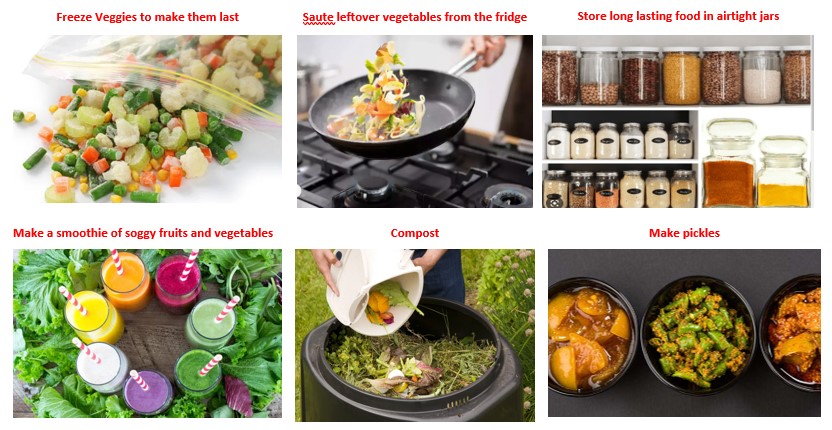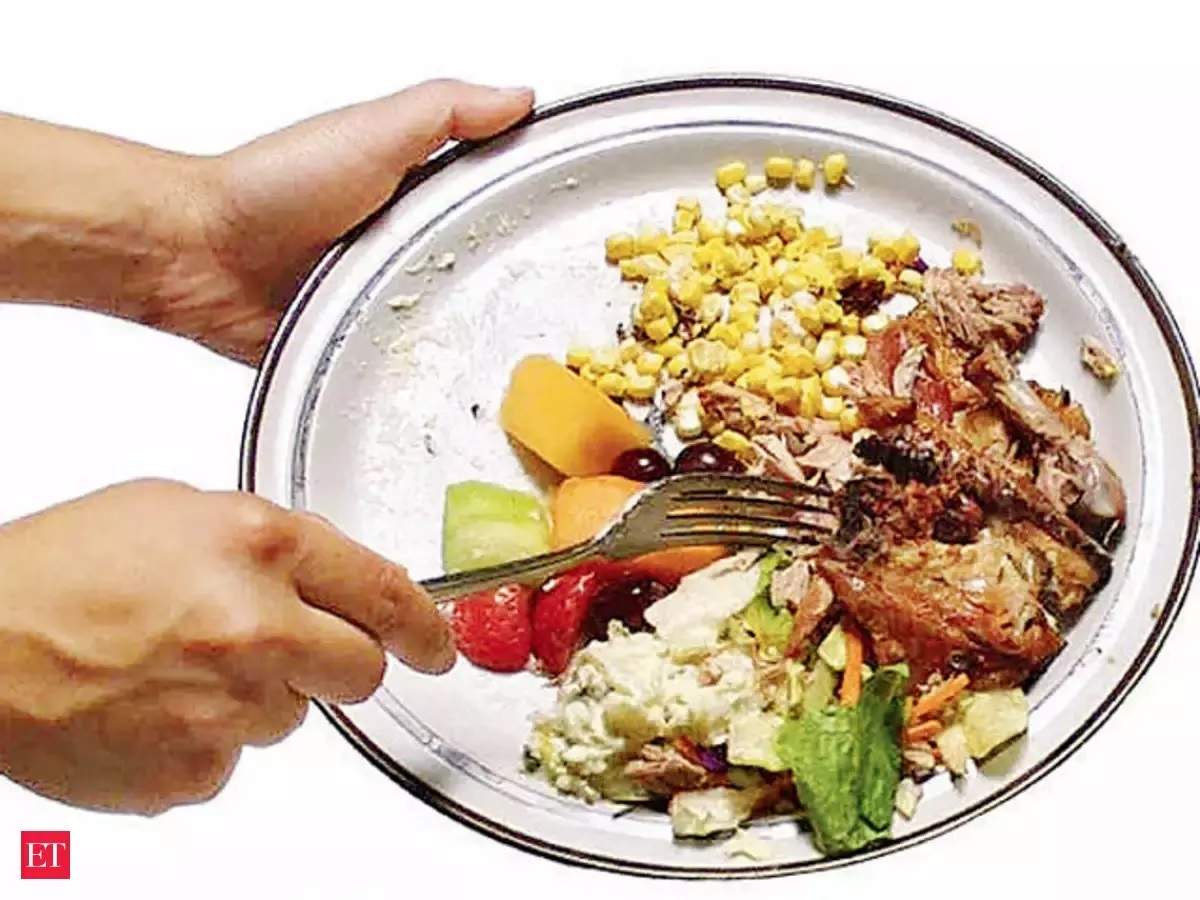Food scarcity is imminent across the world due to the post-pandemic war in Europe.
Agricultural land is shrinking globally. Water is scarce and the weather has become uncertain view climate change. Fertiliser and pesticide costs have been rising, due to the Eurasian war. Poverty leads to curtailing food consumption. Around 20% of the Indian population lacks access to a balanced meal during the day. What if the affluent Indians do not waste 20% of the cooked food? What if the food losses (from farms to kitchens) are minimised? Will the cost of food go down?
‘Mottainai’ is an ancient Japanese word which means, ‘don’t be wasteful’. Yet the people of Japan waste 6.5 million tonnes of food every year. Other countries are no different. 40% of the available food in the US is wasted. It is worth $408 billion. The amount of bread in its cover and milk in sealed packs thrown by Americans every day can provide a decent breakfast to hungry children worldwide. The per capita food waste is highest in affluent countries. Indians waste 20% of the food generated, but considering our large population, we waste the maximum amount of food in the world.

Difference – Food Loss and Food Wastage
Food loss is counted in its supply chains. It begins with crop harvest/ slaughter of animals, birds or catching marine; its transportation and storage till the retail level. Food loss is a serious issue in our country. We hear quite frequently that farmers have thrown away onions, tomatoes or potatoes because of over-production or low market prices. There is a Minimum Sale price for some food items but not all. We are also pained to know about the storage losses of wheat or paddy on the one hand and people going hungry on the other. These losses vary from 5% in certain crops to 10% in others. Fruits and vegetables may even have up to 40% losses. These issues of food loss are quite complex, even for agricultural economists. Certain food laws were made by the government but not all of them were approved by the farmer’s lobby. So, we are stuck with these losses as of now. South and South-East Asia are the leaders in Food Supply Chain losses. I feel incompetent to discuss it further. However, as per a study, if better farming, harvesting and storage techniques are applied, Food Losses can be more than halved. It could be a miracle for India if government and farmers could charter a common programme.
Quantification of Food Wastage
This starts from the retail onwards till our plates and onto the dustbin. It includes wastage in homes & hotel storage as well. Food wastage is one issue, where we can act and ensure that the wastage is minimised. After all, almost Rs 100,000 crore worth of food from homes, hotels, hospitals and schools ends up in bins. Ancient Indian wisdom compares food to the nectar of life. Throwing food away was considered a sin. Yet, an average Indian wastes around 140 g of food a day or roughly 50 kg a year. If people across the world lost or wasted even 50% less food, one billion people could be fed. Malnutrition could be eliminated from the entire globe. As per the Food and Agricultural Organisation of the UN, the food redirected to non-food chains like animal feeds, compost or bioenergy is not considered food loss/ waste.
Ramifications
Food wastage has manifold ramifications.
- The most apparent implication is in terms of losses in farmers’ and consumers’ wealth in the country. The cost includes the cost of seeds, fertilisers, and pesticides. Cost of electricity used for irrigation and food processing. Cost of water. Man-days lost in production and processing. Almost 1% of our GDP is lost this way.
- Water resources of the country used for creating food that is lost or wasted could be used for drinking in water-deficient regions.
- The wasted crops in farms, unsold over-ripe foods and vegetables or rotten fish, along with dumped wasted food are sources of greenhouse gases and contribute to climate change.
Food We Waste
Many raw vegetables, chicken and fruits can be eaten with their skin. Maximum nutrients are just next to the skin. These should be eaten or fed to animals as they are edible. Purchase and cooking of food should be just sufficient. Excess cooked food can always be put in the refrigerator. Plate wastage has to be taught to children early in life. In very hot weather, milk and other foods spoil very fast if not refrigerated. In the rainy season, fungus plays a spoilsport. It can ruin spices, jams, pickles, coffee and other bottled/preserved foods.
How to Reduce Food Wastage?
As 61% of the food is wasted in our own households, the focus will be the reduction of wastage at homes and consumer wastage in restaurants, parties and other gatherings.
- Reutilize unused food: Foods should either be eaten by humans (including donations to the poor) if not possible, then fed to animals. This can be converted into animal/ bird feed. Spoilt food and unwanted portions can be converted into manure if properly put in a small pit. Composting can be done in ‘Home composters’ for those who live in flats. These are available in online shopping apps too.
- Reduce wastage in big gatherings: Lavish parties and large gatherings. Indian weddings are notorious for huge international menus and the wastage of food. Other large parties or gatherings for electoral, religious, or other reasons too, result in wastage. Event managers should pre-plan the disposal of leftover foods (donation) and plate wastage (animal feed).
- Online ordering wisely: Online orders of cooked food and snacks. Online food was the saving grace during the extended lockdowns. However, the number of food items that don’t match taste or portion size is often thrown in bins.
- Buy in smaller quantities: Cereals and other long-life items can be bought once a month. Vegetables and fruits should be bought – once or twice a week, depending on the availability of a refrigerator.
- Preserve, store and Refrigerate: Refrigerate or ferment or preserve in other trusted ways. Cheese/ paneer was invented by our ancestors when milk was available in excess during certain seasons. This was eaten in the lean periods. Lids should be shut tightly on containers, pouches can be sealed by clamps after air is expelled out. Uncooked or left-over cooked food should be refrigerated. First in – First out policy be used for avoiding loss of taste/ spoilage. If too many foods are stored, their containers can be labelled with dates.
- Always Order less: Only the required amount be ordered or purchased. There is no need to fall into the trap of discounts or ‘buy one get one free’ unless you have a donation in your mind.
- Do not discard Perishables: The yellow of the egg and skins of most fruits and vegetables. They are nutrient-dense. Unlike Europeans, we tend to peel off the potatoes causing loss of nutrients and food wastage.
- Make Smoothies: Over-ripe bananas and other fruits including their skins can be mixed with herbs and spices for churning out homemade smoothies.
- Flavour: Rinds and peels of lime/ citrus fruits can be put in a jug for flavouring the drinking water.
- Avoid Thaali for Children: Best avoided for children. Many a time, one Thaali can satisfy the hunger of a couple with added romance.
- Doggy Bag: Excess food ordered in a restaurant should be taken home for refrigeration.
- Make Compost at Home: Kitchen waste as well as spoilt food can be composted for making organic fertilisers. The good thing is that composting can also be done by flat owners too.

Conclusion
There are many more ideas in most Indian families which can be put to use to save or reuse food. We must never consider that those who reuse food are misers. There is a difference between being miserly and being food–responsible. Let us make citizens aware. We can help reduce wastage in a country where around 20% of Indians do not sleep on a full stomach. Each average household of four people can save about 200 kg of food every year. We need to make the public aware of food being wasted.
Image Courtesy: The Economic Times
Disclaimer: The views and opinions expressed by the author do not necessarily reflect the views of the Government of India and Defence Research and Studies
Article courtesy:https://genkris.wordpress.com/2023/03/19/food-scarcity-stop-loss-and-wastage/







